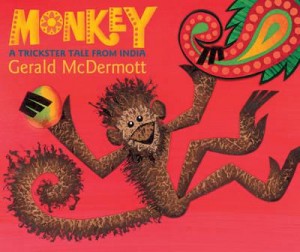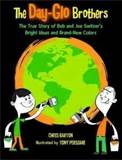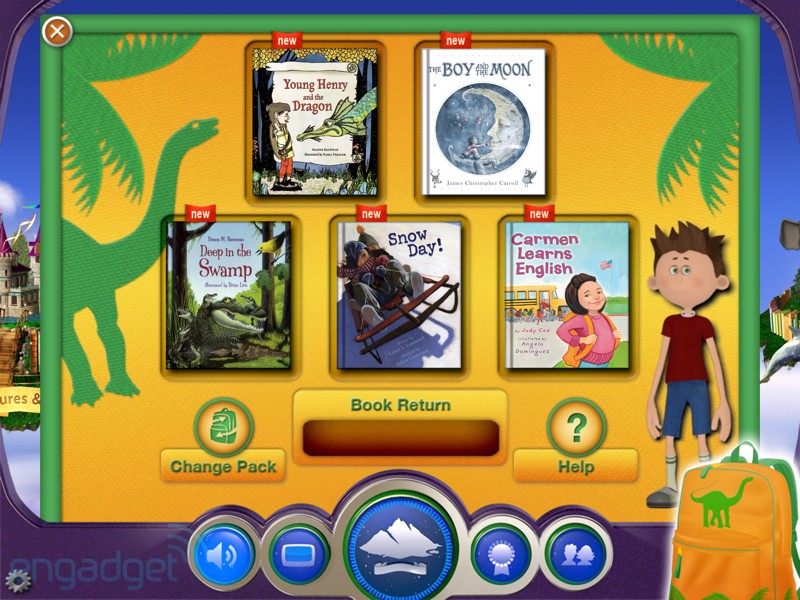“This Is Not My Hat” wins the Caldecott Medal!
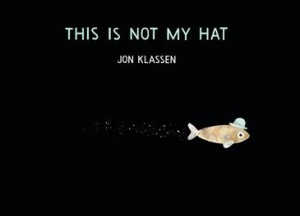 If you’re a kid-lit lover like me, you already know that This Is Not My Hat written and illustrated by Jon Klassen won the Caldecott Medal for 2012. (Were you huddled around your computer screen that morning, too, watching the live broadcast and squealing when your favorites were announced? Just me? Ok.)
If you’re a kid-lit lover like me, you already know that This Is Not My Hat written and illustrated by Jon Klassen won the Caldecott Medal for 2012. (Were you huddled around your computer screen that morning, too, watching the live broadcast and squealing when your favorites were announced? Just me? Ok.)
This Is Not My Hat is an ideal picture book to teach the Common Core Standard of Integrating Knowledge & Ideas: “Use information gained from the illustrations and words in a print or digital text to demonstrate understanding of its characters, setting, or plot” and “explain how specific aspects of a text’s illustrations contribute to what is conveyed by the words in a story (e.g., create mood, emphasize aspects of a character or setting).” The story told by the text is not exactly the same as the story told by the pictures. (Working on a lesson on inference? Grab this book!)
A little fish (the fellow you see on the cover) is narrating the story as he swims. “This hat is not mine,” he admits. He stole it from a big fish, and we see the big fish sleeping. “…(H)e probably won’t wake up for a long time,” says the little fish, and we see the same illustration of that big fish, but now his eyes are wide open. So all the words are from the little fish’s point of view, but we see in the illustrations what the little fish doesn’t realize – the big fish does realize his hat was stolen, does know who took it, and is out to get his hat back. The end shows the big fish with his tiny hat back on his head, and the little fish is nowhere to be seen. Anyone want to infer what happened in the end?
Kids who loved Klassen’s I Want My Hat Back will adore this book, and find similarities beyond the hat theme. So share This Is Not My Hat and compare the information gained from the illustrations to the information we get from the text, and then compare the two books, and you’ll have a double-whammy Integration of Knowledge & Ideas lesson! The endings for both books is left up to the reader to figure out. You can have students debate what they think happens at the end, and give reasons to support their position. Do any of your students think the little fish got away? If he did, what might happen next?
Because there are only three characters in This Is Not My Hat (little fish, big fish, and tattle-tale crab) it’s super-easy to make a Storybox with the book and either stuffed animals, puppets, or felt pieces of the characters for kids to retell the story. If you’re crafty, have kids make hats from brown paper bags (keeping with Klassen’s muted tones) for them to swap and declare, “This is not my hat!”
Read MoreLet’s Talk About Race
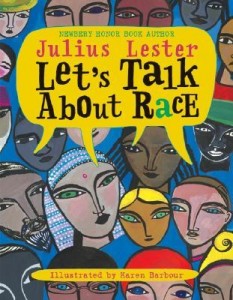 “It is time for parents to teach young people early on that in diversity there is beauty and there is strength.” – Maya Angelou.
“It is time for parents to teach young people early on that in diversity there is beauty and there is strength.” – Maya Angelou.
Next Monday we celebrate the birthday of the Reverend Dr. Martin Luther King, Jr. What better way to honor his dream of a nation where our children “will not be judged by the color of their skin but by the content of their character” than with a wonderful children’s book celebrating our differences and our similarities.
Let’s Talk About Race is written by Julius Lester and illustrated by Karen Barbour. “I am a story,” Lester writes. “So are you. So is everyone.” Our race is just one part of our stories. “To know my story, you have to put together everything I am.”
How does your story begin? When were you born, and who is in your family? What is your favorite food, your religion, your favorite color, your nationality? All of these things are a part of our stories. But, “some stories are true. Some are not. Those who say ‘MY RACE IS BETTER THAN YOUR RACE’ are telling a story that is not true.”
Lester goes on to tell a story that is true: if you press your fingers gently below your eyes, you can feel the bone beneath your skin. And if you press gently on a friend’s face, no matter what their skin color, you will feel the bone there, too. “Beneath our skin I look like you and you look like me…” Instead of focusing on the stories we can make up about each other based on eye color, skin color, and hair texture, we can find out the true stories, the rich and complex stories, of each other.
After you read Let’s Talk About Race with your students, talk about race! And talk about all the other wonderful parts of our stories, from favorite foods to hair color to pet peeves. You can make a questionnaire based on all the elements Lester talks about for students to answer. Next, challenge students to find someone else who had the something the same on his or her list. You can integrate this into a math lesson by graphing some of the answers, like eye color, or get out the art supplies and let students make cool representations of themselves. If your students can “identify the main purpose of a text, including what the author wants to answer, explain, or describe”, you’ll hit the Common Core State Standard of Craft and Structure using a book with a truly worthwhile main purpose.
Read MoreMonkey: a trickster tale from India
It’s January, and is it just me, or are your kids more wiggly than a troop of monkeys, too? Here’s a book to get your kids monkeying around in a good way, and you’ll be teaching the Common Core State Standard of Key Ideas and Details.
Monkey: a trickster tale from India by Gerald McDermott is a beautifully illustrated Indian folk tale. (Reading folktales from different cultures is part of the Key Ideas and Details Standard for Reading Literature.) Monkey wants to get to the island in the middle of the river to eat the mangoes. Crocodile lives in the river and he wants to eat Monkey’s heart. How does Monkey get to the island without being eaten?
Before reading this book, ask your students how you might get across a river where a hungry crocodile lives. Compare, as you read, their suggestions to what Monkey does in the story. Then, teach your “monkeys” cooperative learning and problem-solving skills: give teams of students the same objects like a rope, a scooter, a beach towel, etc., and challenge them to get their entire team across the river (the playground or the gym) without touching the ground or the “water” where the crocodile could get you! To alleviate frustration and encourage learning from errors, if anyone does touch the ground, let the team start over, and brainstorm how to avoid that problem in the next go.
When you return to the classroom, encourage students to experiment with painting paper and cutting it to make cool collages, much like McDermott did for this book. An art activity, cooperative learning that gets kids moving, and a beautiful book – it’s more fun than a barrel of, well, you know!
For more about this Caldecott-winning author/illustrator, please visit geraldmcdermott.com.
Read MoreThe Day-Glo Brothers on a free app – what a bright idea!
I’m a librarian partly because I couldn’t afford my book habit if I had to buy every book I read. So when I’m looking for e-books, I usually look for free ones (some call me cheap, I prefer “fantastically frugal”). But I don’t want crummy books – I want the good stuff! Leave it to Reading Rainbow to hook me up with quality children’s books for free (and a huge variety of even more titles if I want to pay for a subscription).
I downloaded the free Reading Rainbow app to my iPad and was greeted by Levar Burton ( a man who has lured more children to reading than the Pied Piper lured rats, but you don’t have to take *my* word for it.) I was thrilled to find one of my favorite biographies, with complete text and art, a bit of fun animation, and even a game to play.
The Day-Glo Brothers: the true story of Bob and Joe Switzer’s bright ideas and brand-new colors is written by Chris Barton and illustrated by Tony Persiani. Bob and Joe Switzer were in their father’s drugstore when they discovered that certain chemicals glow under ultraviolet light. With lots of experimenting and some accidental luck, the brothers invented colors that would glow even in sunlight, those neon colors called Day-Glo. It’s a “brilliant” story about perseverance, for, as Joe used to say, “If just one experiment out of a thousand succeeds, then you’re ahead of the game.”
So now you can share this enlightening biography (CCSS Range of Reading – check!) with your students for free in paper-book form from the library, or you can share it on iPads with the free Reading Rainbow app. Charlesbridge has a free activity guide to go with the book, along with an author interview and an animation on how fluorescence works. How fun would it be to put a blacklight in a lamp in your classroom and get fluorescent markers for an art project. Students can try making one of the props Joe used in his magic shows, or you can have students demonstrate with Day-Glo colors why we see the phases of the moon. A great biography on a free app – what a bright idea!
Read More




